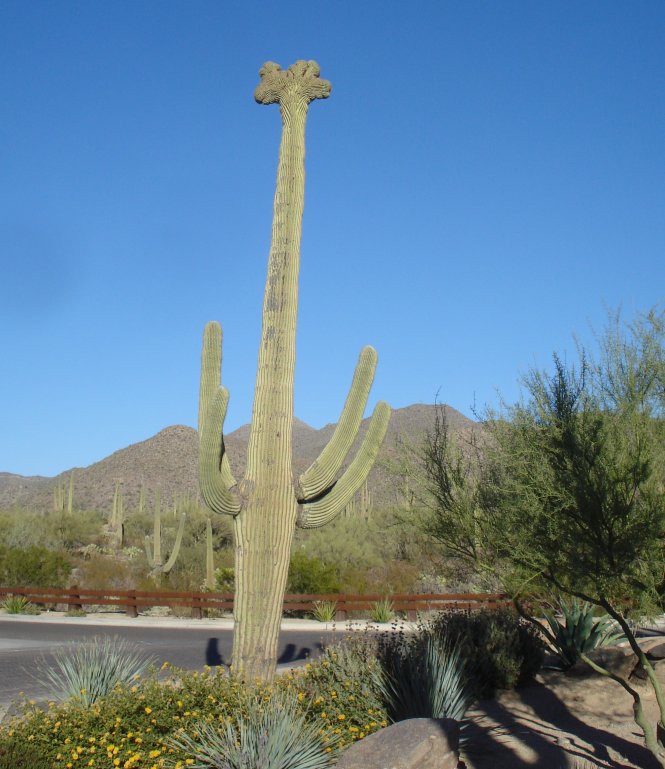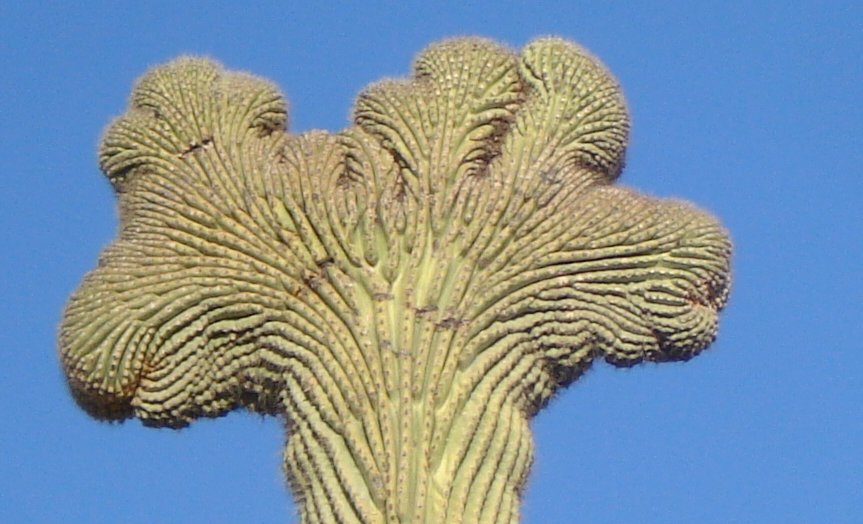
Maybe it is just that Carl knows them. (Carl is a connector. He knows lots of people and is genuinely interested in their activities.) Maybe a place like this is just particularly attractive to people associated with the aviation and travel industries. Maybe something draws them here. The nearby University of Arizona evidently gets a lot of grants to do aviation related research or it could be just a case of random clustering. Whatever the reason, there seem to be are a lot of pilots and airline employees around here. Many are retired but others own homes here sort of as a base. I suppose they are like FSO in that respect. They travel around so much that they really are no longer tied to a particular place, so they choose a nice place like Marana, with its sunny climate and ample amenities.
Below is a view from a bedroom in one of the model homes,
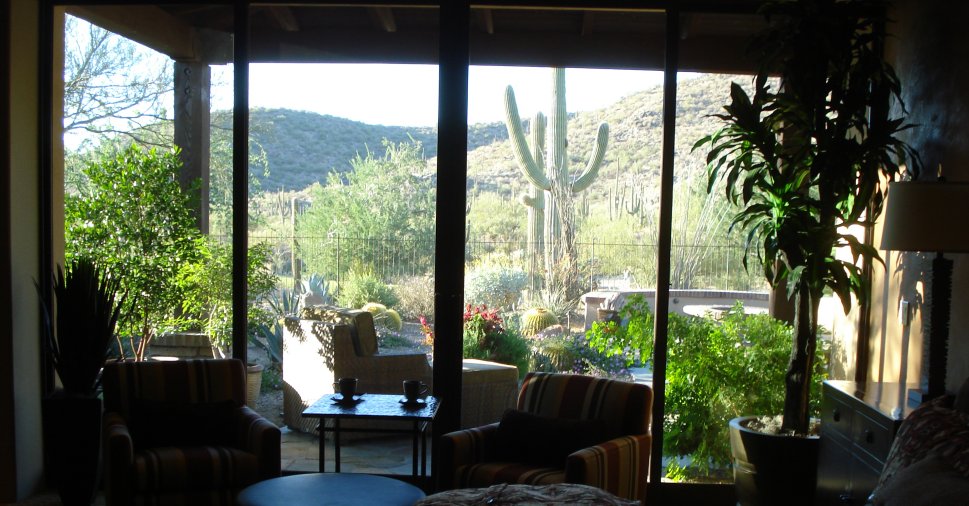
Below is an “outdoor room” at the development. The doors open completely making the living room and the patio one space.
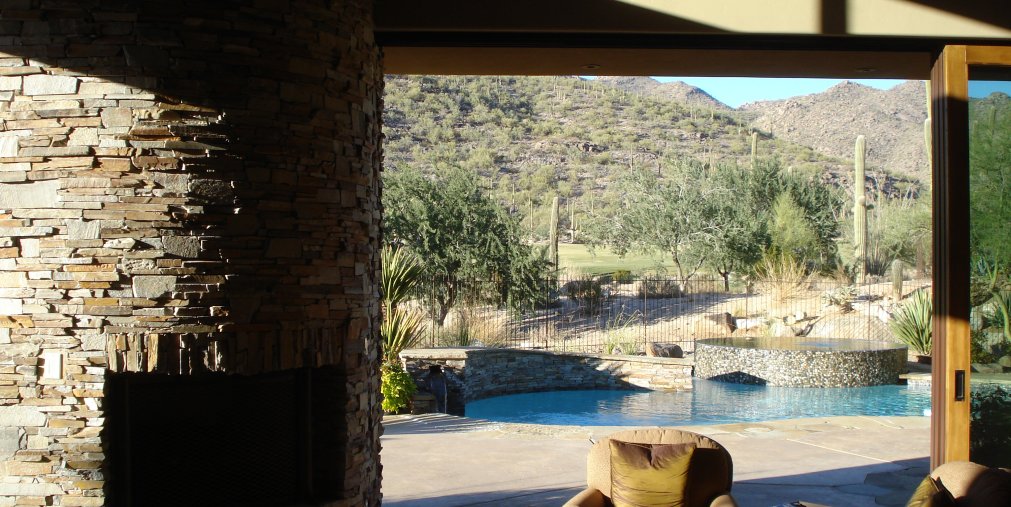
Carl showed me around his community, which is still an expanding work in progress. It was started around 1990 and spreads up the canyons. The growth is extensive, but well-planned. Distances are significant and it is a long way to grocery stores or services. In other words, it is not a place to walk, except as exercise along the trails or on the golf courses.

You could not call it a retirement community, even though many of the residents are retired or semi retired. Carl and Elise seem to be typical of the community in that I don’t know think you could say that they are retired. They no longer work where they did during the bulk of their working lives, but they are active in their community and pursuing a bevy of business ventures. I mentioned Elise’s Jewelry business. Carl works on a variety of computer related projects and produces things like custom greeting cards. A friend of his take pictures of the local wildlife – and sometimes not local as in Australia or the Galapagos – that they use for the cards. If this is retirement, it is the kind of active and actualized life most of us say we want in both work and leisure.
Putting on the Ritz

There is some income diversity in the community, but the scale runs from well-off to rich. You have to pay to live in a nice place like this. Ritz-Carlton is developing the community up the canyon. The big resort will open in December and the residences around can take advantage of the facilities there. The Ritz will also manage the community in terms of trash pickup and maintenance. This is a step above the average home-owners association, however. The residents have a concierge service. You can call and have service worker sent to your house or if you are waiting for a service worker, they can send down someone to wait for you. No more hanging around the house all day waiting for the cable guy.
When I think of putting on the Ritz, the scene from “Young Frankenstein” comes to mind, BTW.
The climate here is hot in the summer, but very nice most of the year. The higher elevation makes it more pleasant even in the hot months and it is around 5 degrees cooler than Phoenix. If the mountains seem familiar it is because those of us who watched TV during the 1960s saw them a lot. Many of the westerns were filmed around here. Even though Bonanza was set in Nevada, much of Virginia City and the Ponderosa were actually filmed here, for example. The diversity of scenery and almost perpetual good weather made it good for filming.
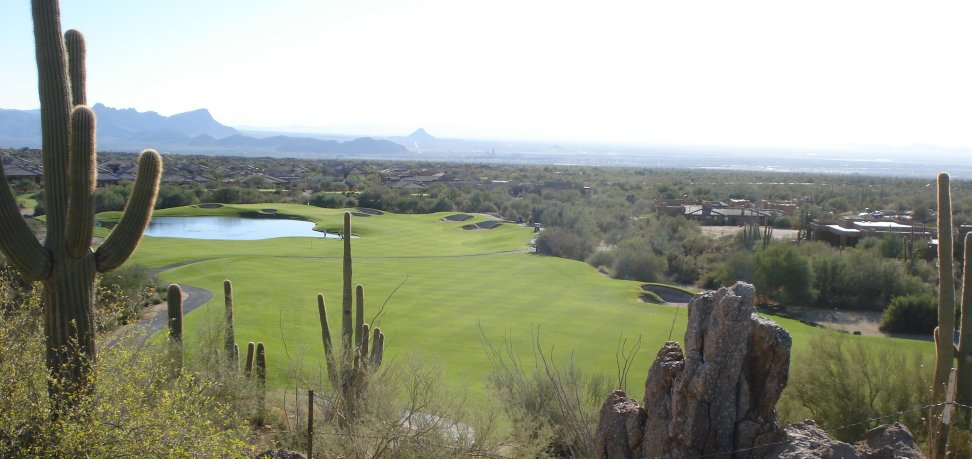
The community builders are doing an excellent job of conserving nature. I wrote in an earlier post how some people seem to be offended by golf courses, which they claim are ecologically wasteful. Those with that affliction probably should not come here. But Carl pointed out how the golf courses are built around the natural drainage patterns and are irrigated only with gray water. As a conservationist, I believe that we should use resources wisely and that is what they are doing here.
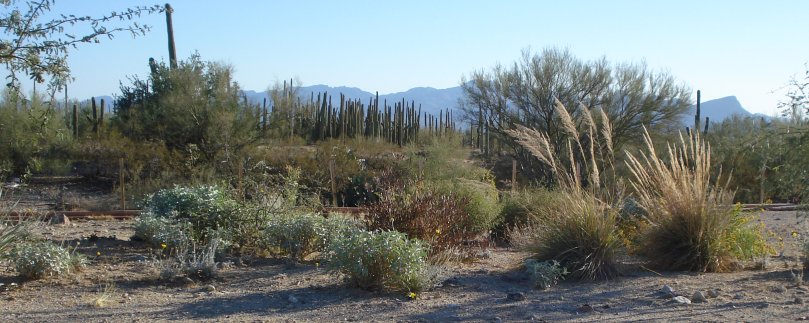
Ample areas are left wild and they make a extraordinary effort to preserve the saguaro cactus. Above is a cactus nursery, where the saguaro wait for a new location. Below is a cactus forest.

Areas of the cactus forests are put off limits to development and care is taken to move the safely saguaro in places where development must occur. These symbols of the Sonora desert take many years to grow, but they have small root systems which makes them very easy to transplant. The apparent anomaly of a shallow root system in a place w/o much water is explained by the hard-pan nature of the soils and the ability of the cactus to suck up and store immense amounts of water during the short times it is available. below and along side is a saguaro crown. This is not something you see every day. It can take many years for a cactus to grow even one arm. This one is certainly more than a century old.

